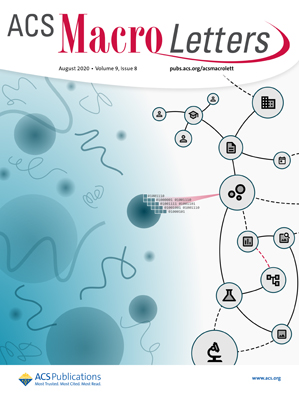具有按需脱粘能力的仿生粘合剂
IF 5.2
Q1 POLYMER SCIENCE
引用次数: 0
摘要
具有按需脱粘(DoD)功能的粘合剂可以简化和改进制造过程,延长产品的生命周期,并促进回收利用,从而吸引了不同行业快速增长的使用兴趣。DoD粘合剂的一般设计方法是基于超分子聚合物,它可以通过外部刺激分解,从而允许修改这些材料的物理特性。然而,超分子胶粘剂的粘接强度一般限于几兆帕斯卡,其合成也往往相当复杂。在这里,我们报告,这些问题可以克服的粘合剂家族的灵感来自天然树脂紫胶的结构和功能。这些粘合剂是基于双酚A二缩水甘油酯醚和仲二胺的线性低聚物,尽管交联环氧热固性树脂广泛使用,但迄今为止尚未开发。我们表明,如果分子量是有限的,高可溶性和可熔融加工的粘合剂可以生产。在不锈钢基材搭接接头上进行的粘合测试显示,剪切强度为3.5 - 16mpa,该范围的上限超过了紫胶蓝图和许多先前的超分子粘合剂的粘合强度。我们证明,在高于玻璃化转变温度的加热下,脱粘是很容易实现的,断裂的接头可以很容易地重新粘合,而不会损失任何粘合强度。本文章由计算机程序翻译,如有差异,请以英文原文为准。

Bioinspired Adhesives with Debonding-on-Demand Capability
Adhesives with debonding-on-demand (DoD) capability can simplify and improve manufacturing processes, extend the life cycle of products, and facilitate recycling, thus attracting fast-growing interest for use in different sectors. A general design approach for DoD adhesives is based on supramolecular polymers, which can be disassembled by an external stimulus, allowing the modification of the physical properties of these materials. However, the adhesive strength of supramolecular adhesives is generally limited to a few megapascals, and their synthesis is often quite involved. Here, we report that these problems can be overcome by a family of adhesives that were inspired by the structure and function of the natural resin shellac. These adhesives are based on linear oligomers of bisphenol A diglycidyl ether and secondary diamines and have, despite the widespread use of cross-linked epoxy thermosets, remained unexplored thus far. We show that if the molecular weight is limited, highly soluble and melt-processable adhesives can be produced. Adhesion tests performed on lap joints made with stainless steel substrates reveal a shear strength of 3.5–16 MPa, and the upper limit of this range exceeds the bond strength of the shellac blueprint and many previous supramolecular adhesives. We demonstrate that debonding upon heating above the glass transition temperature is readily possible and that broken joints can easily rebond without any loss in adhesive strength.
求助全文
通过发布文献求助,成功后即可免费获取论文全文。
去求助
来源期刊
CiteScore
10.40
自引率
3.40%
发文量
209
审稿时长
1 months
期刊介绍:
ACS Macro Letters publishes research in all areas of contemporary soft matter science in which macromolecules play a key role, including nanotechnology, self-assembly, supramolecular chemistry, biomaterials, energy generation and storage, and renewable/sustainable materials. Submissions to ACS Macro Letters should justify clearly the rapid disclosure of the key elements of the study. The scope of the journal includes high-impact research of broad interest in all areas of polymer science and engineering, including cross-disciplinary research that interfaces with polymer science.
With the launch of ACS Macro Letters, all Communications that were formerly published in Macromolecules and Biomacromolecules will be published as Letters in ACS Macro Letters.

 求助内容:
求助内容: 应助结果提醒方式:
应助结果提醒方式:


